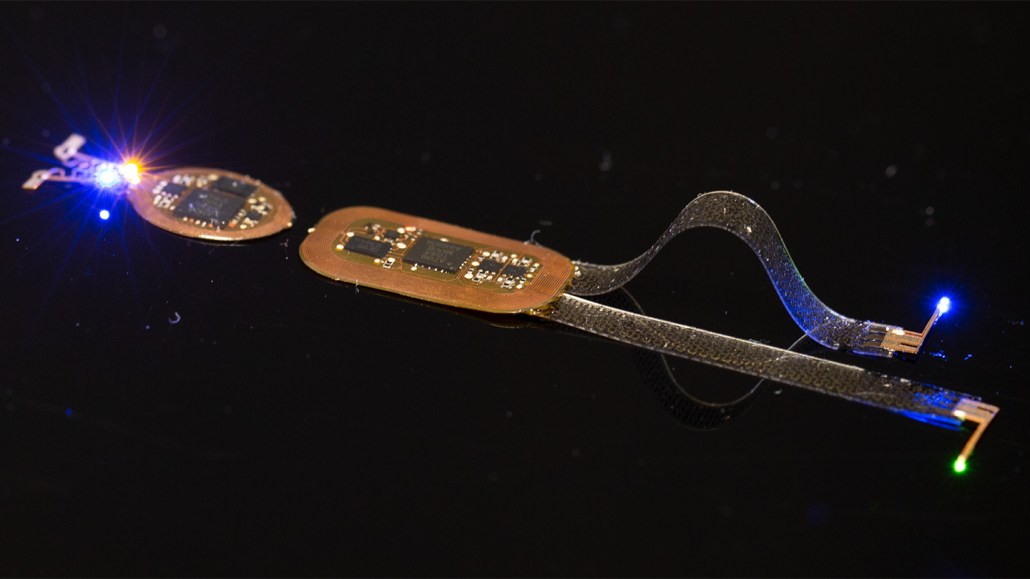Scientists remotely controlled the social behavior of mice with light
The new devices allow complex wireless control of mouse brain activity

A new type of device remotely activates or suppresses neurons in mice using four hues of LEDs. It can be secured to the rodents’ heads (left end of the device) and backs (right end).
Yiyuan Yang and Abraham Vázquez-Guardado






